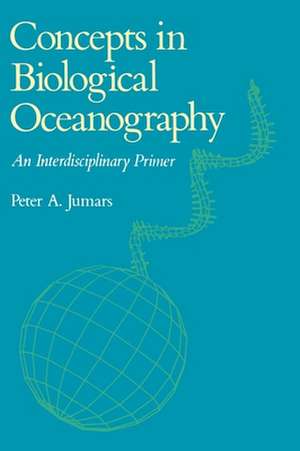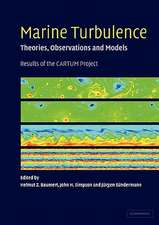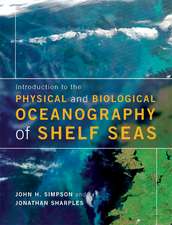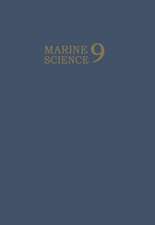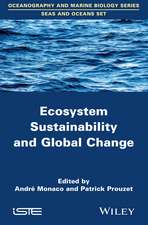Concepts in Biological Oceanography: An Interdisciplinary Primer
Autor Peter A. Jumarsen Limba Engleză Hardback – 30 iun 1993
principles. Examples used are primarily marine to convey how marine systems differ from terrestrial environments. These differences, which carry through the remainder of the book, arise primarily through the ways in which deposit feeders process seafloor muds, suspension feeders extract particles
from seawater, bacteria absorb solutes, and marine plants gather nutrients and light. The next section of the book is devoted to central issues of biological oceanography: controls of primary production, the role of bacteria, and questions of recruitment. The last part treats interdisciplinary
topics as the arena in which the non-biological environmental scientist is most likely to find need for some biological background. The book is designed to introduce and develop concepts rather than to give extensive factual detail.
Preț: 1430.42 lei
Preț vechi: 1959.48 lei
-27% Nou
Puncte Express: 2146
Preț estimativ în valută:
273.75€ • 282.79$ • 227.83£
273.75€ • 282.79$ • 227.83£
Carte tipărită la comandă
Livrare economică 25 martie-08 aprilie
Preluare comenzi: 021 569.72.76
Specificații
ISBN-13: 9780195067323
ISBN-10: 0195067320
Pagini: 368
Ilustrații: line illustrations
Dimensiuni: 162 x 241 x 22 mm
Greutate: 0.84 kg
Editura: Oxford University Press
Colecția OUP USA
Locul publicării:New York, United States
ISBN-10: 0195067320
Pagini: 368
Ilustrații: line illustrations
Dimensiuni: 162 x 241 x 22 mm
Greutate: 0.84 kg
Editura: Oxford University Press
Colecția OUP USA
Locul publicării:New York, United States
Descriere
This textbook for advances level courses in oceanography focuses on the interaction of ecological and physical processes that govern the ocean. The book begins with an introduction to ecology, using foraging theory and analytic formulation of encounter rates of predator and prey as organizing principles. Examples used are primarily marine to convey how marine systems differ from terrestrial environments. These differences, which carry through the remainder of thebook, arise primarily through the ways in which deposit feeders process seafloor muds, suspension feeders extract particles from seawater, bacteria absorb solutes, and marine plants gather nutrients and light. The next section of the book is devoted to central issues of biological oceanography: controlsof primary production, the role of bacteria, and questions of recruitment. The last part treats interdisciplinary topics as the arena in which the non-biological environmental scientist is most likely to find need for some biological background. The book is designed to introduce and develop concepts rather than to give extensive factual detail.
Recenzii
This book is very well-written, contains many well-explained equations, is well-documented and shows the wide interest of the author in the processes that cause the "wax and wane" in marine ecosystems. This reviewer is enthusiastic about the form and content of the book ... The scale of subjects covered and the way in which the topics are explained dictates that in general this book can be recommended to all scientists involved in the quantitative study of coastal and offshorebodies of water.
the book is a useful introduction to biological oceanography for both the undergraduate and the graduate oceanographer ... There is little doubt that it will be one of the texts used in an undergraduate biological oceanography course. It will also be a useful book in any university library, and the excellent list of references will encourage further reading.
the book is a useful introduction to biological oceanography for both the undergraduate and the graduate oceanographer ... There is little doubt that it will be one of the texts used in an undergraduate biological oceanography course. It will also be a useful book in any university library, and the excellent list of references will encourage further reading.
